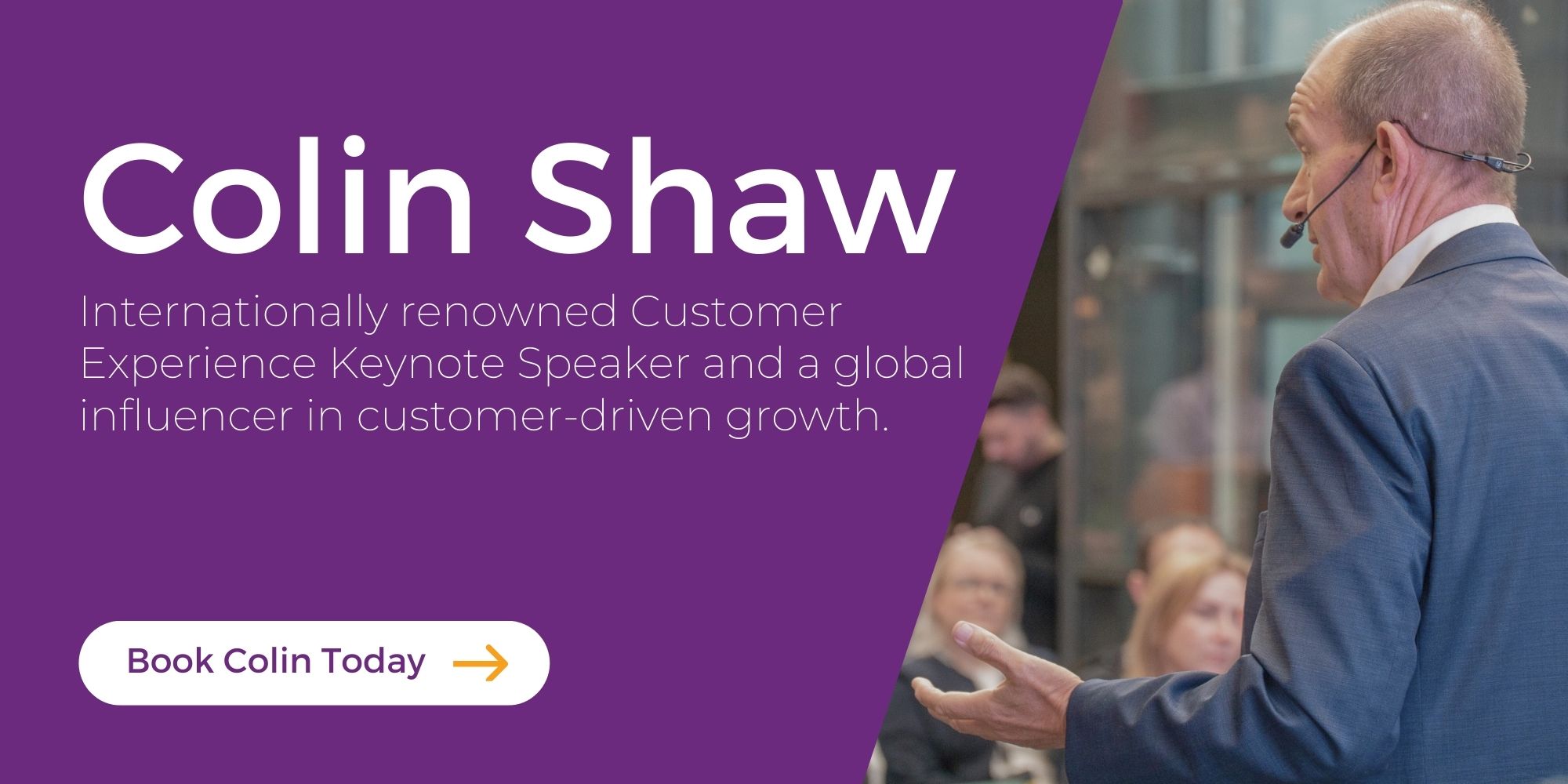Learn more about Colin Shaw: Join over 85,000 people on our LinkedIn Newsletter list or visit our website for more great podcast episodes.
Listen to the podcast:
It might seem counterintuitive to your bottom line and the concept of customer-centricity, but the fact is that sometimes you have customers that you should fire.
I get it. It runs against the conventional wisdom. You’re supposed to serve your customers. You’re supposed to be customer-centric. You’re supposed to get as many customers as you can. So, saying you should let some of these people go sounds weird coming from me.
Nevertheless, it is sometimes necessary. So, in anticipation of your questions, I have a list of five rules that will help you determine when the sacking is required.
Let’s look at them, shall we?

Rule #1: Fire customers if they cost too much.
Now, certain customers are very profitable to you. So, serve this lot as best you can. However, there are a few that are not. They cost you more than they generate revenue.
The key is you have to know these numbers. This rule builds off of a more general principle, which is to pay attention to how much your customers cost you.
Many firms do not track that expense very well.
This situation happens because calculating the revenue is fast and easy, and you can do that quarter by quarter and based on the sales. By contrast, the business costs accumulate differently, and different internal teams calculate it.
In my former corporate life, we didn’t track it well either. It was a while ago, and my business was in telecommunications. The account managers, who were compensated based on revenue instead of profit, had account relationships with extremely large customers who had extensive resources within our company to manage the business. However, the cost of those resources exceeded the revenue these massive companies generated for us. When we realized the scales were tipping in the wrong direction for our bottom line, we had to have some awkward conversations with the customers.
Awkward or not, it is critical to have these conversations and try to amend the balance once you realize you have this problem. If you can work out the details and remedy the situation between your organizations, you don’t have to fire these clients.
But if you can’t? Then, it’s time to fire them.

Rule #2: Fire your customers if they don’t align with your brand.
Colin Kaepernick was an NFL quarterback who chose to kneel during the national anthem before games as a form of protest. His choice sparked controversy, and eventually, Kaepernick’s NFL team dropped him, and he retired.
After two years of retirement, Nike made him a spokesperson for their brand, which also sparked controversy. Many people who disagreed with what Kaepernick protested boycotted the brand. There were people so worked up about the appointment of Kaepernick that they posted videos of them burning their Nikes on Twitter.
However, one commentary on the situation was brilliant. It told the protestors they didn’t boycott Nike; Nike had fired them as customers. They decided aligning their brand with Kaepernick was more important than those customers. They aligned their values with Kaepernick and broke ties with anyone who didn’t share those values.
To be clear, Nike never said that, nor did they want to lose business with their appointment. They solidified their brand meaning and aligned it with specific values, ostensibly to connect with a large part of their existing customer base.
The Kaepernick Nike story shows that there are times when the customers aren’t a good fit for your brand. In those cases, you might need to fire them. Or never get started.
For example, I have not taken contracts because the client didn’t seem fully invested in changing their experience. A company wanted to hire us but only wanted us to train the employees with virtual training. I knew that a few virtual sessions wouldn’t result in the cultural overhaul the company needed and wanted, so I passed. I didn’t want their unsuccessful implementation’s blood on my hands.
Rule #3: Fire customers if they don’t fit with your future.
I visited a client once that had enjoyed excellent growth. Unfortunately, they were not quite equipped to handle all their business, so they were running themselves ragged to meet their customers’ demands.
You should have seen their faces when I suggested they fire some customers. When I said that, it was as if the devil had entered the room.
However, their current customers were holding them back from their future customers. The growing company was hanging onto business that didn’t fit them anymore, and it was time to prune.
This rule is closely aligned with the previous one. Firing customers that don’t fit with your brand overlaps with firing customers that don’t fit your future. The distinction is that some customers might not share your values so that they might fall under the brand rule, but there are specific segments that don’t fit your business plans and fall under the future rule. For the latter, you will spend too many resources serving these customers, be it time or money, inhibiting your ability to acquire new customers aligned with the long-term growth plan.

Now, how you fire them can be gradated on a scale. For example, there is the direct route of telling those customers that you are done and will no longer be serving them, or you can soft-fire them where you don’t stop them from buying, but you don’t serve them in the old way anymore or devote your resources elsewhere. In most cases, these customers will find their way out themselves.
Think of it as prioritization. If you need someone gone, go the direct route. If you want to serve new segments, which means you have fewer resources for the current business, you can try the softer route.
For example, I was using a cruise website that was very outdated and not operating all that well. It felt like I was using a website from ten years ago. Based on their online user interface, I wondered how many younger people they lost.
Of course, that technology soft firing works the other way, too. Some companies no longer have a phone number published on the website and expect every interaction to occur via chat or other digital means. That signals to specific customers, those who don’t want to interact digitally, that their business is not wanted there.
It’s okay if this type of strategy where you alienate customer segments is one you employ. Just ensure that you do it deliberately. Having these soft firings accidentally because of neglect or apathy is not a strategy; it’s incompetence.

Rule #4: Fire customers if they are too risky.
Being in business is risky enough. If you are taking on additional risk to work with the customer, stop working with them.
Maybe it’s their business model. Maybe it’s how they want to pay for your goods or services. Perhaps it sounds good in the short term but has more long-term risk.
Suppose that your client wants you to do more with them. That’s great news, right? However, do not overcommit. If your company has one client, that can be a significant risk. It’s much better to have a distributed source of revenue.
Rule #5: Fire customers if they abuse your employees.
Southwest Airlines has a policy of always siding with their employees. So, if a customer complains about a situation but the employee tells a different story, the company supports the employee. Southwest sees it as helping the employees they trust to deliver the experience Southwest expects them to deliver.
I believe this policy is good, but it took me a minute to reach that conclusion. Years ago, a hotel general manager told me he had witnessed a guest taking one of his employees to task, and the manager banned that customer from the hotel.
I remember feeling mixed emotions about this because I learned that the customer is always right. However, I also saw how this support meant that the employee would feel as if they were valued at the hotel by their manager and would continue to do their best work on its behalf.
Post-pandemic, many stories have been about people behaving badly in airplanes, movie theatres, and restaurants. So, ensure you support your employees who suffer from this bad behavior. But also examine the situation to see if you can prevent the abuse. If there is a common point where the abuse happens, chances are there is a moment in the experience that hasn’t fully recovered from COVID yet.
Remember, you are justified in preventing abuse to your employees. However, it is also important to realize that if the abuse is rising in frequency, then it could be a problem in your experience that needs adjusting.
The customer is key to business. We used to think they were always right, and, in many cases, that is still true. However, there are cases where they aren’t right, or at least not right for you anymore. In these specific cases, you must fire them. Sometimes, the only way forward with a customer is not to go forward at all, and that’s okay.

Colin has spoken at hundreds of conferences, including some of the world’s largest brands. Talk to Colin about how he can speak ‘in person’ or ‘virtually’ at your conference. Click here.


